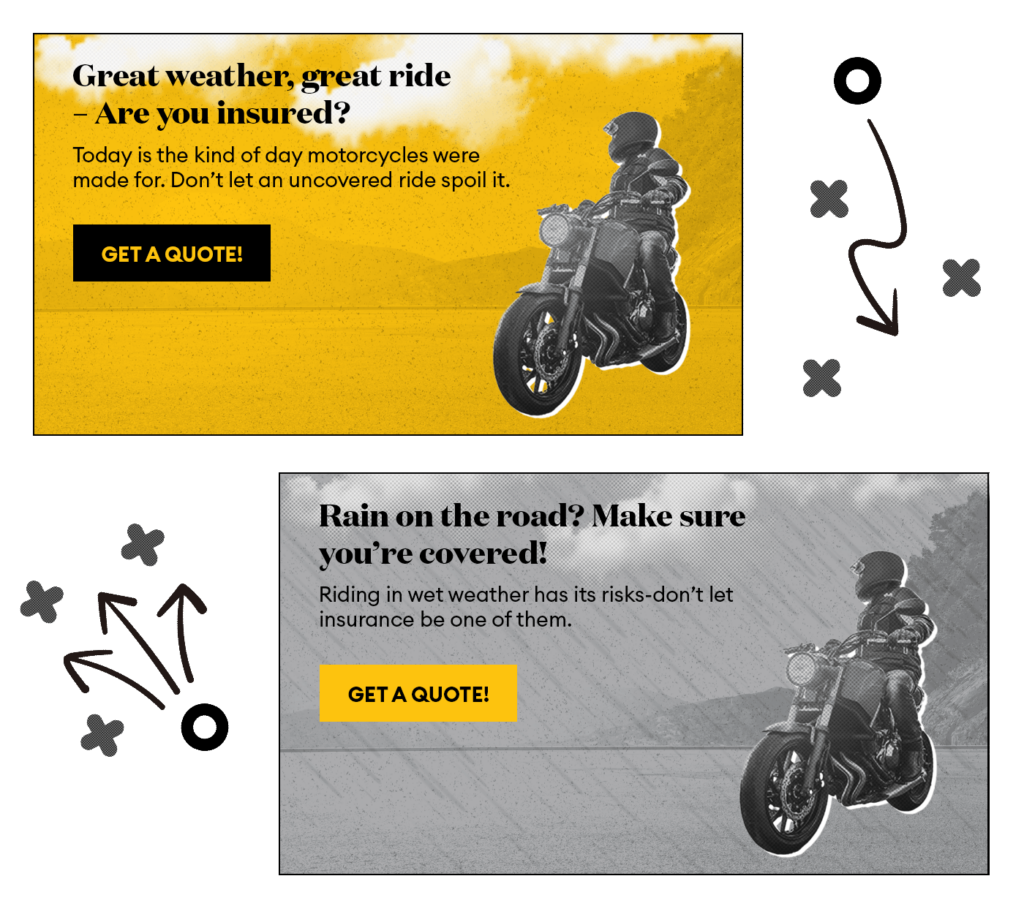Most people don’t become loyal customers after just one interaction with your brand – and that’s normal. The key to repeat purchases and long-term loyalty lies in how you re-engage those audiences, keeping your brand top of mind until they’re ready to take action. Remarketing is a powerful strategy for nurturing these relationships, turning interest into action and action into loyalty through targeted, personalized outreach.
What is remarketing? The basics and its role in digital marketing
Remarketing is the practice of re-engaging people who have previously interacted with your brand, using direct communication channels like email, SMS, or customized ad campaigns. Rather than targeting entirely new audiences, remarketing focuses on reminding warm prospects and past customers about your products, services, or offers. It’s a critical part of a full-funnel digital marketing strategy, helping brands extend the customer journey, foster trust, reinforce brand value, encourage ongoing engagement, and help move audiences closer to conversion while also strengthening long-term loyalty.
Remarketing vs. retargeting: What’s the difference?
While remarketing and retargeting are often used interchangeably, they have distinct differences. Retargeting typically refers to paid ads served to users who visited your website, but did not convert. Remarketing is a broader strategy that can include retargeting, but typically uses more channels, like email and SMS, and utilizes different data sources, like customer lists or CRM data. Whereas retargeting hyperfocuses on moving a user through the funnel toward conversion, remarketing also aims to drive engagement and build loyalty.
How remarketing works: Harnessing first-party data
Remarketing relies on first-party data: information a brand collects directly from its customers, like email addresses, phone numbers, purchase history, and website behavior. Using this data, brands can create targeted lists and craft personalized campaigns across various marketing channels. The goal is to reconnect with audiences who have already engaged with the brand in some way, delivering timely and relevant messages based on their past interactions. Some examples include:
- Email based on cart abandonment: Send a personalized email reminder featuring the exact items a user left in their cart, along with a limited-time discount to encourage checkout.
- Email based on buying history: After a customer makes a purchase, email them suggestions for accessories or complementary products they might also like, based on their buying history.
- SMS follow-up after event attendance: Text attendees a thank-you message after a webinar or in-person event, with a link to related resources or a special offer.
- Display ads for existing customers: Upload an existing customer list from your CRM to Facebook or Google to serve loyalty-focused ads, like early access to a new collection.
- Email inactive users: Email users who haven’t engaged with your brand in a while, offering an incentive like a discount or personalized recommendations based on their past activity.
By leveraging insights like product preferences, past purchases, or abandoned carts, remarketing helps brands deliver experiences that feel customized, rather than generic, encouraging users to take the next step in their journey.
Remarketing in a privacy-centric world
As privacy regulations tighten and third-party data becomes less reliable, brands have had to rethink how they approach remarketing. Today’s remarketing strategies place a greater emphasis on ethical data collection and consent-driven practices, prioritizing the use of first-party data gathered directly from users. Modern remarketing campaigns are built around trust, offering value in exchange for personal information and being transparent about how that data will be used. Brands are also exploring server-side tracking, customer data platforms (CDPs), and preference centers to responsibly manage and activate their data, ensuring that personalized outreach remains effective without compromising user privacy.
Remarketing strategies that convert: From awareness to loyalty
Effective remarketing isn’t one-size-fits-all. By strategically aligning your messaging and channels to a customer’s stage in the journey, you can meet their needs more effectively and maximize the value of every interaction. Whether you’re looking to expand reach, deepen engagement, drive conversions, or nurture long-term loyalty, remarketing can be tailored to meet those goals.
- Grow reach with lookalike audiences: Use your existing customer data to create lookalike audiences and extend your reach to new users who share similar characteristics. By identifying common traits among your existing customers, you can expand your reach to new, high-potential users who are more likely to engage with your brand.
- Generate engagement with personalized content: Re-engage past site visitors, email subscribers, or app users by delivering content based on their interests and behavior. This might include sending blog posts, tutorials, or product highlights that match their previous activity, encouraging continued exploration and interaction with your brand.
- Drive conversions with behavior-based triggers: Target users who’ve abandoned their carts, browsed specific products, or taken high-intent actions with reminders, incentives, or urgency-based messaging. These campaigns are designed to recapture attention at the right moment and guide users toward completing their purchase.
- Build loyalty and retention with ongoing value: Remarketing doesn’t stop after the first sale. Use email and ads to thank customers, ask for feedback, or promote loyalty programs and reordering opportunities. This keeps your brand top of mind and encourages repeat purchases, deeper engagement, and long-term customer value.
Best practices for effective remarketing
Remarketing can be incredibly effective — but only when it’s done thoughtfully. Bombarding users with generic messages or overexposing your brand can do more harm than good. To get the most out of your remarketing efforts, consider these best practices:
- Segment your audience thoughtfully: Not all users are at the same stage of the journey. Use behavioral data, engagement history, and customer attributes to tailor your messaging for different segments, such as cart abandoners, past purchasers, or lapsed users.
- Prioritize personalization: Use first-party data to personalize your content, timing, and channels. Whether it’s a product recommendation based on browsing behavior or an email tailored to a customer’s purchase history, relevance is what drives results.
- Respect frequency and timing: Oversaturation can lead to ad fatigue or even frustration. Set frequency caps, avoid over-messaging, and time your outreach based on when users are most likely to engage.
- Align creative with context: Make sure your creative matches the user’s experience. For example, if someone browsed a specific product, show that product, not a generic homepage ad. Your messaging should feel like a natural next step, not a reset.
- Test, learn, and optimize: Run A/B tests on creative, copy, timing, and channels to identify what works best for each audience segment. Use performance data to refine your campaigns and continuously improve results.
- Stay privacy-compliant: With changing regulations and consumer expectations, it’s critical to handle data responsibly. Ensure users have opted in where needed, provide clear privacy options, and be transparent about how their data is used.
Building lasting relationships through remarketing
Remarketing is more than a tactic for winning back lost sales. It’s a strategic tool for deepening relationships, guiding users through the customer journey, and building long-term brand loyalty. By leveraging first-party data, choosing the right channels, and tailoring your messaging to each audience segment, you can create meaningful, timely interactions that drive both engagement and conversion. As privacy expectations evolve, the brands that succeed with remarketing will be those that lead with value, transparency, and relevance. When done right, remarketing doesn’t just bring people back, it brings them closer.Want to strengthen your remarketing strategy? Our team can help you turn data into action with personalized, privacy-conscious campaigns that drive results. Let’s connect.












